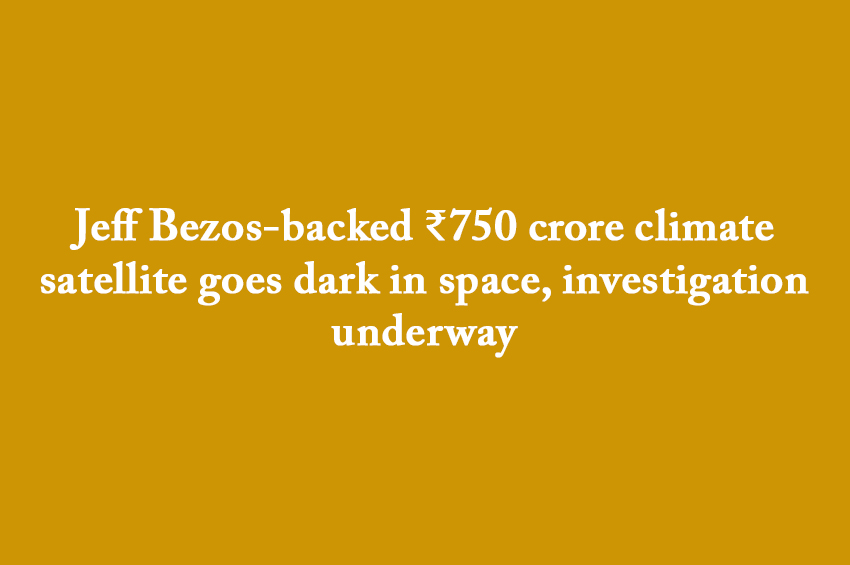Winning Bizness Desk
Mumbai. A climate-monitoring satellite funded in part by Amazon founder Jeff Bezos has gone missing in space, according to confirmation by New Zealand authorities on July 2. The satellite, named MethaneSAT, was launched in March 2024 as part of the SpaceX Transporter-10 mission. Estimated to be worth around ₹750 crore, it was built by the Environmental Defense Fund (EDF) with collaboration from a consortium that includes the New Zealand Space Agency, BAE Systems, Google, Rocket Lab, and Harvard University. Its key mission was to track global methane emissions—a major contributor to climate change.
Technical failure blamed for communication loss
Operators at EDF reported that contact with the satellite was lost on June 20. Despite attempts to restore communication, the satellite eventually lost power. EDF has declared that MethaneSAT is likely not recoverable. Officials have not confirmed a definitive cause but said technical issues, standby modes, and a failed thruster may have contributed. A full investigation is underway. Despite the premature end of its operation, EDF has called the mission a significant scientific and technical milestone.
Why MethaneSAT was built
MethaneSAT was created to independently monitor and measure methane emissions from industrial sites across the globe. Unlike some satellites that can only track large, known methane sources or operate within small geographic areas, MethaneSAT combined high resolution with wide-area coverage. Its aim was to verify emissions data from oil and gas companies, offering more transparency to policymakers. The satellite's ability to detect small, scattered sources made it a unique tool in global climate monitoring efforts.
What happens to satellites lost in space
When satellites lose functionality in orbit, scientists use several techniques to deal with them. These include active debris removal with robotic capture tools, controlled re-entry into the Earth’s atmosphere where the satellite burns up, or relocating them to a “graveyard orbit” to avoid interference with other satellites. However, these recovery or disposal operations depend on the satellite's condition and available systems—which MethaneSAT may no longer have due to power loss.
Why methane emissions matter
Methane is a greenhouse gas far more potent than carbon dioxide in trapping heat. Although it is invisible, its effects are severe, as it absorbs 20 to 30 times more infrared radiation than CO₂. It originates mainly from fossil fuel extraction and industrial processes. Once released, it rises into the troposphere, forming a heat-trapping layer that significantly accelerates climate change. MethaneSAT aimed to help combat this by enabling real-time, reliable emission tracking.
Summary Points:
- Jeff Bezos-backed MethaneSAT has gone missing in space after losing contact on June 20.
- The ₹750 crore satellite was launched in March 2024 to track methane emissions.
- Built by EDF and supported by ten global partners including Google and Harvard.
- Technical issues and power failure likely caused the loss of communication.
- Investigation is ongoing, but recovery chances are slim.
- MethaneSAT was unique in detecting smaller, scattered methane sources globally.
- Methane is a major greenhouse gas, significantly more potent than carbon dioxide.


